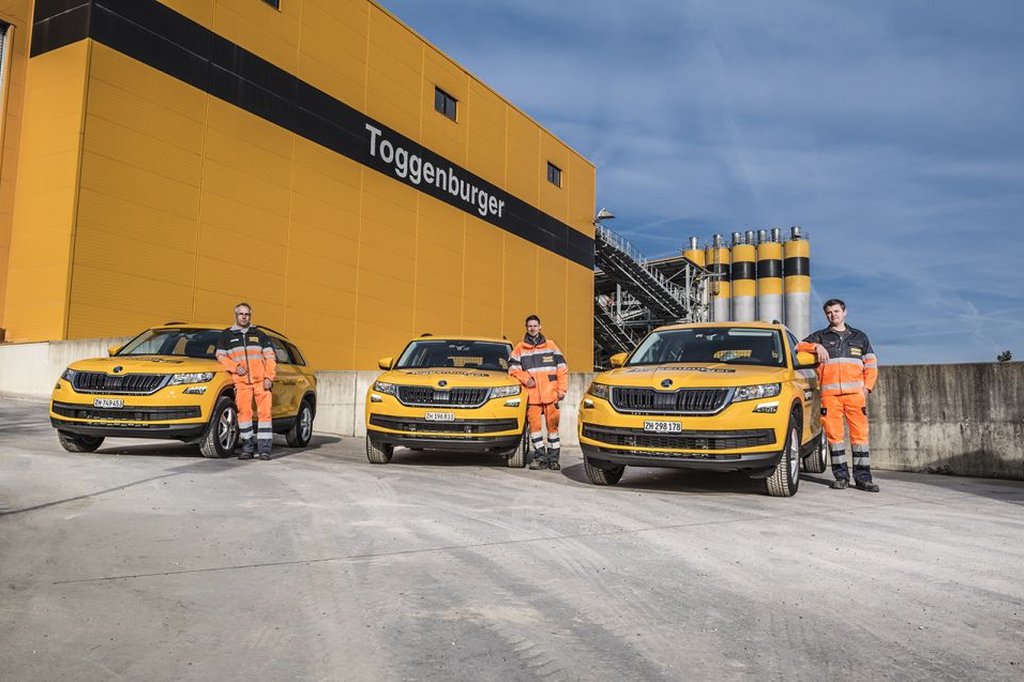The construction company Toggenburger wants to electrify its fleet of company cars. INFRAS analyzed the usage profiles of the company cars, made a cost estimate for the necessary charging infrastructure and developed an implementation plan to support the SME in achieving this ambitious goal.

Company cars make up a significant proportion of the new cars registered in Switzerland every year. The electrification of company fleets would therefore make a decisive contribution to the decarbonization of transport. The first companies have already made a start. The construction company Toggenburger also wants to take this step and has commissioned INFRAS to draw up an implementation plan. After all, converting a company fleet to e-cars is not a sure-fire success. It brings with it a number of challenges – not only in terms of costs and logistics, but above all in terms of acceptance among the workforce.
Reservations about e-cars an important factor
The difficulty with electrifying a company car fleet is that the cars are usually used for both business and private purposes. If you are on the road for business during the day, but also want to use the car after work and at weekends, the charging time at the company location is often not enough. You also need a charging station at home – which many people who live in rented accommodation do not yet have.
This is why there are some reservations among Toggenburger’s workforce about switching to e-cars. «For the changeover to succeed, you not only need a well-developed charging infrastructure at the company site, but also the acceptance of the employees. Their concerns need to be addressed», says Roberto Bianchetti, e–mobility expert at INFRAS. INFRAS paid special attention to this aspect in the concept for the electrification of the Toggenburg company fleet.
Different usage profiles for company cars
Car requirements vary from person to person. While the accountant drives to work in the morning and back home again in the evening, the engineer is often on the move from one construction site to another during the day. In addition to the driving distance during work, there are other differences: the downtime at the company location, the availability of a charging station at home, the personal attitude towards e–mobility and the intensity of private use.
INFRAS used these factors to analyze the usage profiles and found that more than a third of Toggenburger’s company cars are currently suitable for electrification. These are cars that only cover short distances per day, have a long idle time at work and can be charged at home – and whose drivers have no aversion to e-mobility.
Tailored roadmap for a staged changeover
In order to convert the rest of the fleet, the company’s own charging infrastructure needs to be expanded, particularly with fast charging stations. INFRAS has estimated the scope and costs of this expansion for Toggenburger’s headquarters in Winterthur and identified possible synergies with the planned PV system. It also compiled measures to reduce employees’ reservations about e-mobility, such as test drives and training courses.
In the implementation plan, INFRAS proposes a phased changeover: As part of a pilot project, five employees who can charge at home and do not need a charging station at the company site will initially be given an e-car. «They act as role models and help to break down psychological barriers», says Bianchetti. At the same time, the expansion of the charging infrastructure will begin so that the next ten vehicles can be converted in the medium term and then the entire fleet in two further stages.
«The concept that we developed for Toggenburger can also be applied to other companies that want to evaluate and plan the conversion of their company vehicles to e-cars», says Bianchetti. INFRAS is thus making an important contribution to the electrification of company car fleets and the expansion of electromobility.
Further INFRAS studies related to the topic

